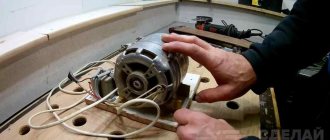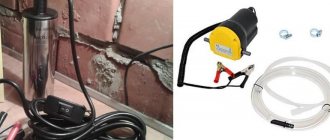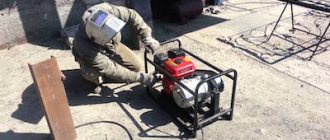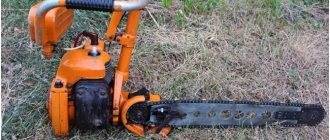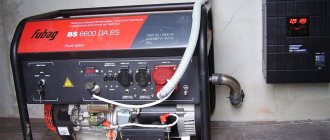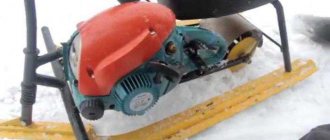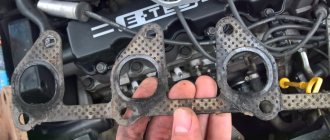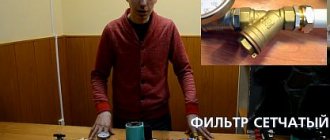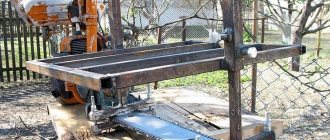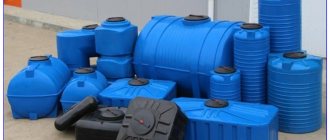Calculator for calculating the capacitance of working and starting capacitors
When connecting an asynchronous electric motor to a single-phase 220/230 V network, it is necessary to ensure a phase shift on the stator windings in order to simulate a rotating magnetic field (RPF), which causes the motor rotor shaft to rotate when it is connected to the “native” three-phase AC networks. Known to many who are familiar with electrical engineering, the ability of a capacitor to give electric current a “head start” by π/2 = 90° compared to voltage provides a good service, since this creates the necessary torque that forces the rotor to rotate in already “non-native” networks.
Calculator for calculating working and starting capacitors
But the capacitor must be selected for these purposes, and it must be done with high precision. That is why readers of our portal are provided with an absolutely free use of a calculator for calculating the capacity of the working and starting capacitor. After the calculator, the necessary explanations will be given on all its points.
Calculator for calculating the capacitance of working and starting capacitors
The following dependencies were used for the calculation:
The data obtained from the calculator can be used to select capacitors, but they are unlikely to be found with exactly the same ratings as will be calculated. Only in rare exceptions can there be coincidences. The selection rules are:
Here is a table with the ratings of operating and starting capacitors. The capacitors of the CBB60 and CBB65 series are given as an example. These are polypropylene film capacitors, which are most often used in connection circuits for asynchronous motors. The CBB65 series differs from the CBB60 in that they are housed in a metal case.
Electrolytic non-polar capacitors CD60 are used as starting capacitors. They are not recommended for use as workers, since their long operating time makes their life shorter. In principle, both CBB60 and CBB65 are suitable for starting, but they have larger dimensions than CD60 with equal capacities. The table provides examples of only those capacitors that are recommended for use in electric motor connection circuits.
| Polypropylene film capacitors CBB60 (Russian analogue of K78-17) and CBB65 | Electrolytic non-polar capacitors CD60 | |
| Image | ||
| Rated operating voltage, V | 400; 450; 630 V | 220—275; 300; 450 V |
| Capacity, uF | 1.5; 2.0;2.5; 3.0; 3.5; 4.0; 5.0; 6.0; 7.0; 8.0; 10; 12; 14; 15; 16; 20; 25; thirty; 35; 40; 45; 50; 60; 65; 70; 75; 80; 85; 90; 100; 120; 150 µF | 5.0; 10; 15; 20; 25; 50; 75; 100; 150; 200; 250; 300; 350; 400; 450; 500; 600; 700; 800; 1000; 1200; 1500 uF |
In order to “gain” the required capacitance, you can use two or more capacitors, but with different connections, the resulting capacitance will be different. When connected in parallel, it will add up, and when connected in series, the capacitance will be less than any of the capacitors. Nevertheless, such a connection is sometimes used in order to connect two capacitors with a lower operating voltage to obtain a capacitor whose operating voltage will be the sum of the two connected. For example, by connecting two 150 µF and 250 V capacitors in series, we get a resulting capacitance of 75 µF and an operating voltage of 500 V.
Series and parallel connection of capacitors
In order to calculate the capacitance of two capacitors connected in series, readers are provided with a simple calculator where you simply select two capacitors from a range of existing values.
Calculator for calculating the resulting capacitance of two capacitors connected in series
Is it possible to connect a three-phase asynchronous motor to a 220 V network yourself?
Typically, this operation is trusted only to electricians with practical experience.
However, you can connect the engine yourself. This is proven by the article on our portal: “How to connect a three-phase motor to a 220 V network.” Source
Description of types of capacitors and calculation of specific capacitance
Connection diagram for starting capacitors
For electric motors with low frequencies, an electrolytic capacitor would be an ideal option; it has the maximum possible capacitance, which can reach a value of 100,000 μF. In this case, the voltage can fluctuate from standard 220 V to 600 V. Electric motors, in this case, can be used in tandem with an energy source filter. But at the same time, when connecting, it is necessary to strictly observe polarity. The oxide film, which is very thin, acts as electrodes. Electricians often call them oxide.
- It is better not to use polar ones in a system connected to an alternating current network , in this case the dielectric layer is destroyed and the device heats up and, as a result, a short circuit occurs.
- Non-polar ones are a good option , but their cost and dimensions are significantly higher than electrolytic ones.
When choosing the best option, you need to consider several factors. If the connection occurs through a single-phase network with a voltage of 220 V, then a phase-shifting mechanism must be used to start. Moreover, there should be two of them, not only for the capacitor itself, but also for the engine. The formulas used to calculate the specific capacitance of a capacitor depend on the type of connection to the system; there are only two of them: triangle and star.
What is a three-phase motor?
Most power units that convert electrical energy into thermal energy are asynchronous machines. If you disassemble any such engine, it will become clear that it has two key components, on the interaction of which all its work is based.
Stator
This is the stationary part of the motor, which has a ring-shaped shape - a hollow cylinder. It should be immediately clarified that it is not solid, roughly speaking, it is made through turning a round steel blank. The stator is assembled from ring plates (magnetic core), which avoids the formation of so-called Foucault surface currents, which can greatly heat the metal. There are longitudinal grooves on the inner diameter into which the wire winding is placed. Most standard motors are three-phase, meaning they have three stator windings (one for each phase). Geometrically, each winding/phase is offset relative to the others by 120°. This calculation allows, when a voltage of 380V is applied to the phase terminals, to excite a rotating magnetic field in the windings.
Rotor
This is a moving (rotating) part, structurally combined with the drive shaft. It also has a stacked plate core (magnetic core), but unlike the stator, the slots for the windings are located on the outer diameter. Moreover, calling them windings can only be done from a functional point of view, since in reality they are copper rods of a certain diameter, and not bundles (coils) of wire.
On both sides, the rods are connected to annular limiting plates, forming something like a squirrel cage. This arrangement is the most common and is called a “short-circuited rotor”. When voltage is applied, there is also a magnetic field here, but it has a slightly lower rotation speed (asynchronous) than that of the stator. This difference is called slip and is about 2...10%. Thanks to it, an EMF (electromotive force) is induced between the fields, which causes the shaft to rotate at the operating frequency.
How to connect a 3-phase motor to a single-phase network?
Starting a motor with three working windings is possible because by default it has phases shifted by 120°. If you apply voltage to just one phase, then absolutely nothing will happen by analogy with a single-phase 220V motor, where in this case equivalent multidirectional magnetic fields arise. Formally, for this you need to include at least one more phase in the work in order to create a shift and gain the necessary torque. Connection to a network with a voltage of 220V is most often made through an additional circuit - a circuit of working and starting capacitors.
The general starting circuit when connected with a star (left) and a triangle (right) will look like this:
As you can see, in both the first and second cases, two of the three windings are connected directly to a single-phase 220V network. The third phase is looped back to one of the two previous ones through an intermediate chain of capacitors: Srab - main/working and Sp - for starting. The second one is connected in parallel via an SA key. The latter has normally open contacts, and the extreme position of the button is not fixed - in order for current to flow through the starting capacitor, it must be held down.
Troubleshooting when turned on
If, after connecting the capacitors and applying voltage, the motor hums but does not start, the reasons may be varied:
- insufficient capacitance of the capacitor (the ammeter will record a current exceeding the permissible value);
- damage to the jumper or power wire;
- incorrect connection;
- supplying voltage to the wrong winding.
A loud, unpleasant noise when the motor is turned on and the shaft rotates indicates that the capacitor capacity has been exceeded.
It will not be bad to operate a three-phase motor in a single-phase network. The only drawback will be the power it develops - not 100%, but 60-80% of the nominal one. If the tank is used only for starting, then the net power of the engine will not exceed 60% of its rated power.
Why are parallel tanks used?
Any person who has not yawned in physics lessons at one time should remember that the maximum energy consumption of a 3-phase motor is observed precisely at the moment of its startup, when the rotation speed increases from 0 to the nominal value.
The higher the power, the higher the peak electricity consumption. From which the logical conclusion follows - the capacity that will support operation at 220V is most likely not enough to start. Therefore, to bring the motor into operation, according to calculations, it needs to be increased approximately twice as much as the working one. After starting, when the optimal speed is reached (at least 70% of the nominal speed), the starting capacitors are turned off by releasing the SA button. This must be done, otherwise the large total capacity will cause serious phase imbalance and overheating of the windings.
If the motor power is low or it does not operate under heavy load, then most likely it will be possible to get by with starting through the working circuit.
How to calculate capacitance and select a capacitor
It is obvious that the issue of choosing containers for starting and operating a three-phase motor in a single-phase network depends on its power, rated (phase) current and voltage. The calculation is usually carried out using the following formulas:
There are two quantities in this equation:
Both connection diagrams give different values of linear and phase characteristics, as can be seen in the following illustrations:
You can calculate the required current between the windings using clamps or using formulas. If both options seem complicated, then you can carry out a calculation and select a capacitor using an empirical relationship: 7 μF per 100 W of power.
As for starting capacitors, their selection is carried out with the expectation that the capacitance must be higher than that of the working capacitors in order to cover peak consumption during startup. Different sources indicate different values of the proportional coefficient: from 1.5 to 3. In practice, the recommendation for a twofold increase is most often used.
Next, you can select the capacitors and begin the layout. To organize engine starting, paper (MBGP, KBP, MBGO), electrolytic or metallized polypropylene (SVV) models are used. The first ones, as a rule, are widespread and cheap, but have relatively large dimensions with a small capacity, which forces them to collect entire batteries. Electrolytic models require the use of diode elements and resistance in the control circuit, damage or failure of which will lead to the destruction of the capacitor. SVV models are more modern, and therefore they do not have practically the shortcomings that are present in their analogues. In shape, capacitive blocks can be produced either square or round (barrels).
You should also select the operating voltage of the capacitor, which, according to calculations, should be approximately 1.15 times higher than in a single-phase 220V network. Smaller values have a negative impact on the durability of the blocks, while larger values have a negative impact on the dimensions of the assembly.
Source
Three-phase network
Three-phase motors
Star connection diagram for three-phase electric motors
Basic circuits for connecting three-phase electric motors: star and triangle. For their work, a “triangle” would be preferable. Calculation formula: Work = k*Iф / U network. Now a little more detail.
- Iph – current value that the electric motor consumes in rated mode. The easiest way is to look at it yourself. Sometimes, if possible, measure with pliers.
- Unetworks – this is all clear. This supply voltage is 220 volts.
- K – special coefficient. For a triangle it is 4800, and for a star it is 2800. It is simply substituted into the calculation formula.
In some cases, namely when the starting characteristics reach significant values (starting the engine under load), it is necessary to use additional starting capacitors to start the electric motor. Their parameters are calculated as follows: they take the work element and multiply its values by 2.5...3. Also, the operating voltage of this spare part must be at least 1.5 times higher than the mains voltage.
It is worth noting that when you turn on a three-phase motor to 220V, a power loss of up to 30% occurs and nothing can be done about it.
Single-phase motors
There is also a large group of asynchronous machines that were originally designed to operate in a single-phase network. They are usually connected to 220 volts, but this does not mean that everything is so smooth. Although they, unlike three-phase motors, do not lose torque, their starting torque is quite low, which means capacitors are also necessary for these motors.
In fact, these are two-phase electric motors: they have two windings offset by 90 degrees relative to each other. And if you supply 220V with the same bias, then no phase shifter is needed to start!
But this does not happen and therefore to start it at 220 you need a starting element
One capacitor is a working capacitor, for permanent connection, the other is a starting capacitor. It turns off after the electric motor accelerates to the calculated values and the 220 volt circuit is no longer needed. As 220V starting devices they are used only in drives up to 1 kW. The fact is that at higher powers the price of the necessary phase shifters is so high that their use is not economically profitable.
As for calculating the main capacitance, you can use the following relationship: for every 100 watts, take 1 µF. Then it’s a matter of second-grade level arithmetic. The value of the starting device is 2...2.5 times higher.
Note! This is not the value of an individual capacitor, but the total capacity of Srab + Descent!
For 220 volts, it is necessary to take starting elements with a voltage of at least 450 volts, since the voltage on them differs from the mains 220v!
Capacitor for starting an electric motor, how to calculate power - in detail
Each object is initially supplied with three-phase current. The main reason is the use in power plants of generators with three-phase windings, out of phase with each other by 120 degrees and generating three sinusoidal voltages. However, with further distribution of current, only one phase is supplied to the consumer, to which all existing electrical equipment is connected.
Sometimes there is a need to use non-standard devices, so you have to solve the problem of how to choose a capacitor for a three-phase motor. As a rule, it is necessary to calculate the capacity of a given element that ensures stable operation of the unit.
Design and purpose of capacitors
This element of the electrical circuit consists of two plates (plates). The plates are positioned relative to each other so that there is a gap between them. When a capacitor is connected to an electric current circuit, charges accumulate on the plates. Due to the physical gap between the plates, the device has low conductivity.
Attention! This gap can be air or filled with a dielectric. The following dielectrics are used: paper, electrolyte, oxide films.
The main feature of such a two-terminal network is the ability to accumulate electric field energy and instantly transfer it to the load (charge and discharge).
The first prototype of the container was the Leyden jar, created in 1745 in the city of Leiden by the German von Kleist. The jar was lined with copper foil inside and out. This is how the idea of creating covers came about.
Leyden jars connected in parallel
The graphic designation of a two-terminal network on diagrams and drawings is two vertically located lines (like plates) with a gap between them.
Designation on diagrams
Explanations for the calculation
The connection diagram is usually marked on the capacitor itself, and can be indicated by either a star or a triangle. As a rule, these are two different forms, the capacity of which is calculated differently:
| Connection diagram for working and starting capacitors with different methods of connecting windings | Calculated dependencies | ||
| Wed = 2800*I/U; I = P/(√3*U*η*cosϕ) Ср – capacity of the working capacitor | |||
| Wed = 4800*I/U; I = P/(√3*U*η*cosϕ) Ср – capacity of the working capacitor | |||
| Cn = 2.5*Cr, where Cn is the capacitance of the starting capacitor for any connection method | |||
| Explanation of symbols: Cp - capacitance of the working capacitor, μF Sp - capacitance of the starting capacitor, μF I - current, A U - network voltage, V η - motor efficiency in %, divided by 100 cosϕ - power factor The obtained calculation results are used to select capacitors of the required ratings. It is unlikely that the denomination of the calculated value can be found, so the selection rules are as follows: Below we provide a table of nominal values of capacitors of the SVV60 and SVV65 series. These capacitors are most often used when connecting asynchronous motors. The SVV65 series differs from the SVV60 series in its metal housing. Electrolytic capacitors of the CD60 series are often used as starting capacitors. Moreover, experienced professionals do not recommend using them as workers, since long periods of operation quickly disable them. | 400; 450; 630 | 220-275; 300; 450 | |
| Nominal range, μF | 1,5; 2,0; 2,5; 3,0; 3,5; 4,0; 5,0; 6,0; 7,0; 8,0; 10; 12; 14; 15; 16; 20; 25; 30; 35; 40; 45; 50; 60; 65; 70; 75; 80; 85; 90; 100; 120; 150 | 5; 10; 15; 20; 25; 50; 75; 100; 150; 200; 250; 300; 350; 400; 450; 500; 600; 700; 800; 1000; 1200; 1500 | |
Sometimes it makes more sense to use two or more capacitors to get the required capacitance. Moreover, they can be connected in series or in parallel. With a parallel connection, the resulting capacitance will add up; with a series connection, it will be less than the capacitance of any of the capacitors. To calculate this connection, we have also prepared a special calculator for you.
Connection diagram "Triangle"
The connection itself is relatively easy; the current-carrying wire is connected to the starting capacitor and to the motor (or motor) terminals. That is, if we take it more simply, there is a motor; it contains three conductive terminals. 1 – zero, 2 – working, 3 – phase.
The power wire is stripped and there are two main wires in a blue and brown winding, the brown one is connected to terminal 1, one of the capacitor wires is also connected to it, the second capacitor wire is connected to the second working terminal, and the blue power wire is connected to the phase.
If the motor power is small, up to one and a half kW, in principle only one capacitor can be used. But when working with loads and high powers, it is mandatory to use two capacitors; they are connected in series, but between them there is a trigger mechanism, popularly called “thermal”, which turns off the capacitor when the required volume is reached.
A quick reminder that the lower wattage starting capacitor will be turned on for a short period of time to increase the starting torque. By the way, it is fashionable to use a mechanical switch, which the user himself will turn on for a given time.
You need to understand that the motor winding itself already has a star connection, but electricians use wires to turn it into a delta. The main thing here is to distribute the wires that go into the junction box.
Connection diagram “Triangle” and “Star”
Connection diagrams for an operating voltage of 380 V
Industrially produced asynchronous three-phase motors can be connected in two main ways:
- star connection";
- delta connection".
Electric motors are structurally made of a movable rotor and a housing into which a stationary stator is inserted (can be assembled directly in the housing or inserted there). The stator consists of 3 equal windings, wound in a special way and located on it.
In a star connection, the ends of all three motor windings are connected together, and three phases are supplied to their beginnings. When connecting windings in a triangle, the end of one is connected to the beginning of the next.
Triangle and star connection.
Connection diagram "Star"
But if the engine has 6 outputs - terminals for connection, then you need to unwind it and see which terminals are interconnected. After that, it is reconnected to the same triangle.
To do this, change the jumpers, let's say there are 2 rows of terminals on the engine, 3 each, they are numbered from left to right (123.456), using wires they are connected in series 1 to 4, 2 to 5, 3 to 6, you first need to find the regulatory documents and look on which relay the winding starts and ends.
In this case, the conditional 456 will become: zero, working and phase - respectively. A capacitor is connected to them, as in the previous circuit.
When the capacitors are connected, all that remains is to test the assembled circuit, the main thing is not to get confused in the sequence of connecting the wires.
Source
Blitz tips
- When connected to a 660 V network, some use the combined start method.
The most important thing when connecting a star is to determine the path of the winding, because if you didn’t guess at least one pair of windings and, say, start-end, start-end, end-start, then the work will be bad and it will be immediately visible, there is also the possibility of burning the engine in this case. - Not all engines have terminal markings, most often they are marked “ground”, the rest need to be “ringed” using a multimeter , or read the instructions; manufacturers often indicate this information there.
- It all depends on the voltage of the network into which the engine will be connected; if the network is 220 V, then you need to use a triangle circuit, but for 380 V a star circuit will be used.
- When connected to a 660 V network, some use the combined start method. That is, the launch occurs on the “triangle”, and when the required power is reached, the transition to the star occurs. But this is still a risky case; the windings may burn out. It is better to use specialized motors that operate at a given voltage.
- In order to change the direction of rotation of the rotor in the stator, you need to connect the capacitor not to zero , but to phase. This is also a beacon if the connection is incorrect.
How to select and connect a capacitor for a three-phase motor
Each object is initially supplied with three-phase current. The main reason is the use in power plants of generators with three-phase windings, out of phase with each other by 120 degrees and producing three sinusoidal voltages. However, with further distribution of current, only one phase is supplied to the consumer, to which all existing electrical equipment is connected. Sometimes there is a need to use non-standard devices, for example, how to choose a capacitor for a three-phase motor. As a rule, it is necessary to calculate the capacity of a given element that ensures stable operation of the unit.
The principle of connecting a three-phase device to one phase
In all apartments and most private houses, all internal energy supply is carried out via single-phase networks. Under these conditions, it is sometimes necessary to connect a three-phase motor to a single-phase network. This operation is quite possible from a physical point of view, since individual phases differ from each other only by a time shift.
Such a shift can be easily organized by including any reactive elements in the circuit - capacitive or inductive. It is they who perform the function of phase-shifting devices when working and starting elements are used.
It should be taken into account that the stator winding itself has inductance. In this regard, it is quite enough to connect a capacitor with a certain capacitance outside the engine. At the same time, the stator windings are connected in such a way that the first of them shifts the phase of the other winding in one direction, and in the third winding the capacitor performs the same procedure, only in the other direction. As a result, the required phases are formed in the amount of three, extracted from a single-phase supply wire.
Thus, the three-phase motor acts as a load for only one phase of the connected power supply. As a result, an imbalance is formed in the energy consumed, which negatively affects the overall operation of the network. Therefore, this mode is recommended to be used for a short time for low-power electric motors. Connecting windings to a single-phase network can be done in two ways - star or triangle.
Features of a three-phase motor
Asynchronous electric motors with three stator windings predominate in various agricultural sectors. They are used to drive ventilation devices, remove manure, prepare feed, and supply water. The popularity of such motors is due to a number of advantages:
- simplicity of structure;
- reliability in operation;
- when connected in normal mode, expensive and scarce devices are not used;
- the number of technical services is small.
You can try to connect a three-phase motor to 220, knowing the differences in winding connection diagrams. The number of phases for which the motor is designed can be determined by the number of terminals in its terminal box: a three-phase motor will have 6 terminals, and a single-phase motor will have two or four.
The three-phase motor windings are connected according to a set pattern called “star” or “delta”. Each of them has its own advantages and disadvantages. In a star connection, the ends of the windings are connected. In the terminal box, this connection diagram will be displayed using two jumpers between the terminals labeled “C6”, “C4”, “C5”. If the motor windings are connected in a triangle, then a beginning is attached to each end. The terminal box will use three jumpers that will connect the terminals “C1” and “C6”, “C2” and “C4”, “C3” and “C5”.
Schemes for connecting a three-phase motor to a single-phase network
When a three-phase electric motor is planned to be connected to a single-phase network, it is recommended to give preference to a delta connection. An information plate attached to the housing warns about this. In some cases there is a “Y” designation here, which means a star connection. It is recommended to reconnect the windings in a delta configuration to avoid large power losses.
The electric motor is connected to one of the phases of a single-phase network, and the other two phases are created artificially. For this, a working capacitor (Cp) and a starting capacitor (Sp) are used. At the very beginning of starting the engine, a high level of starting current is required, which cannot be provided by the running capacitor alone. A starting or starting capacitor, connected in parallel with the working capacitor, comes to the rescue. With low engine power, their performance is equal. Specially produced starting capacitors are marked “Starting”.
These devices operate only during start-up periods in order to accelerate the engine to the required power. It is subsequently turned off using a push-button or double switch.
Features of the circuit with capacitors
The windings of all three-phase electric motors can be connected according to two schemes:
- “Star” - in this case, the ends of all windings are connected at one point. And the beginnings of the windings are connected to the supply network.
- “Triangle” - the beginning of the winding is connected to the end of the adjacent one. The result is that the connection points of the two windings are connected to the power supply.
The choice of circuit depends on what voltage the motor is supplied with. Typically, when connected to a 380 V AC network, the windings are connected in a “star”, and when operating under a voltage of 220 V - in a “delta”.
In the picture above:
a) star connection diagram;
b) triangle connection diagram.
Since a single-phase network clearly lacks one supply wire, it needs to be made artificially. For this purpose, capacitors are used that shift the phase by 120 degrees. These are working capacitors; they are not enough when starting electric motors with a power of over 1500 W. To start powerful engines, you will need to additionally include another container, which will facilitate work during the start.
Types of starting capacitors
Small electric motors, the power of which does not exceed 200-400 watts, can operate without a starting device. For them, one working capacitor is quite enough. However, if there are significant loads at the start, additional starting capacitors are necessarily used. It is connected in parallel with the working capacitor and during the acceleration period is kept in the on position using a special button or relay.
To calculate the capacitance of the starting element, it is necessary to multiply the capacitance of the working capacitor by a factor equal to 2 or 2.5. During acceleration, the engine requires less and less capacity. In this regard, you should not keep the starting capacitor constantly on. High capacity at high speeds will lead to overheating and failure of the unit.
The standard capacitor design consists of two plates located opposite each other and separated by a dielectric layer. When choosing a particular element, it is necessary to take into account its parameters and technical characteristics.
All capacitors are presented in three main types:
Tips for use
Determining the required characteristics and choosing a model usually requires considerable effort. In this regard, it makes sense to take into account a few tips:
- It is mandatory to use a starting capacitor when working with high-power motors or in cases where it is necessary to start rotation of the shaft with a load.
- Motors smaller than 1 kW can usually be operated without the use of a starting capacitor. Such motors are often used in household appliances.
When connecting the starting circuit, you must carefully follow all the necessary rules. An error can lead to a breakdown or emergency.
